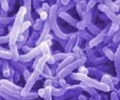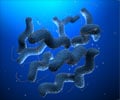
Though no definitive arsenic source had been determined in the past, many geologists claimed that recent man-made ponds in the Bengal delta are a major contributor, as the heavy rainfall and erosion have created high amounts of organic material in the ponds.
Saugata Datta from Kansas State University and his colleague Karen Johannesson from Tulane University recently completed a study looking at the ponds and reached this conclusion after modelling the transport of the pond's organic matter through the meters of sand and clay to the aquifers below.
"Our study suggests that ponds are not contributing substantial amount of water or this old organic matter into the groundwaters in the shallow aquifer in this region," Datta said.
"These very high arsenic levels are actually coming from something else, possibly from within the organic matter contained in these Holocene sedimentary basins.
Due to the organic matter's highly reactive nature to minerals like arsenic, the researchers found that this organic matter actually serves as a retardant and causes minerals to absorb more slowly into the aquifer sediments.
Advertisement
"So it takes much longer for the organic matter to move the same distance along a groundwater flow path than it does through just the water itself," he added.
Advertisement
Source-ANI












